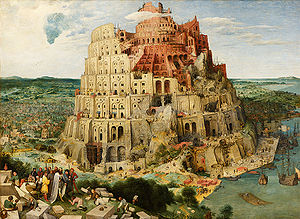Aesthetics

Aesthetics is the philosophical study of the nature and experience of art and beauty.
Contents
Aesthetics and the Golden Ratio

Greek scholars believed that the Golden Ratio (also called divine proportion) is the key to beauty. Artists such as Leonardo da Vinci and Salvador Dali often incorporate the Golden Ratio in their drawings.
Definition of "art"
Art has been defined in the field of aesthetics in various ways. Some adhere to a rigid definition of "art," such as paintings, sculpture and other traditional genres, while others believe that art should not be strictly defined, and thus believe that anything progressive may be labeled as such.
Architecture
Aesthetics is an important part of architecture. A poll co-sponsored by the American Institute of Architects revealed the following public ranking of "America's Favorite Architecture," with the name of the architect in parentheses:[1]
- Empire State Building (Shreve, Lamb & Harmon)
- The White House (James Hoban)
- Washington National Cathedral (George Bodley and Henry Vaughan)
- Jefferson Memorial (John Russell Pope)
- Golden Gate Bridge (Irving F. Morrow and Gertrude C. Morrow)
- U.S. Capitol (William Thornton, Benjamin Henry Latrobe, Charles Bulfinch, Thomas U. Walter, Montgomery C. Meigs)
- Lincoln Memorial (Henry Bacon)
- Biltmore Estate/Vanderbilt Mansion (Richard Morris Hunt)
- Chrysler Building (William Van Alen)
- Vietnam Veterans Memorial (Maya Lin with Cooper-Lecky Partnership)
- St. Patrick's Cathedral[2] (James Renwick)

Beauty and the religious/irreligious
See also: Atheists and physical attractiveness and Atheism and obesity
English anthropologist Edward Dutton on beauty among the religious/irreligious
See also: Atheists and physical attractiveness
The English anthropologist Edward Dutton indicates that using right-wing politics as a proxy for religiosity, there is evidence that atheists are less attractive and he pointed out that right-wing politicians are more likely to have symmetrical faces according to a study.[3]
Religious Philippines had the most wins in the big four international beauty pageants in 2017. Irreligion is rare among Filipinos
See also: Religious Philippines winning streak in the major international beauty pageants
The Philippines (a very religious country) have had a winning streak in major international beauty pageants (see: Religious Philippines winning streak in the major international beauty pageants).
Wikipedia, an online encyclopedia founded by an atheist and agnostic, has an article entitled Philippines at major beauty pageants.[4]
Wikipedia's article Irreligion in the Philippines indicated in 2018: "Irreligion in the Philippines is particularly rare among Filipinos..."[5]
See also

- Plotinus
- Music
- The Renaissance
- Sistine Chapel
- Spanish Golden Age
- Irish Dance
- Sculpture
- Master of Arts
- Painting Masterpieces
- The beauty industry in America
- World treasures
- Argument from beauty


External links
- National Arts Education
- The Arts U. S. Life, Culture and History.
- Academic Art Artcyclopedia.
- "Talk to your daughter before the beauty industry does" - video exposing the pressure on girls and women to conform to an (impossible?) ideal of beauty
References
- ↑ http://www.aia.org/release_020707_150Buildings
- ↑ http://www.fordham.edu/halsall/medny/stpat1.html
- ↑ Defending Atheist Mutational Load Theory — Part 2 by Scott A. McGreal MSc., Psychology Today, June 22, 2018
- ↑ Philippines at major beauty pageants
- ↑ Irreligion in the Philippines, Wikipedia, 2017

